Key Takeaways
-
Carpenter Bee Nest Detection: Look for increased bee activity, round holes in wood, sawdust piles, and dark stains or buzzing sounds from wooden structures.
-
Nest Appearance: Carpenter bee nests feature smooth, 1/2-inch holes with internal tunnels extending into the wood for egg laying.
-
Materials Used for Nests: Carpenter bees dig directly into wood without using external materials, resulting in sawdust around nest sites.
-
Common Nesting Sites: They often choose eaves, decks, railings, patio furniture, fences, siding, and window frames—especially if wood is untreated.
-
Safe Removal Steps: Treat at dusk or dawn with insecticide or natural repellents, wear protection, and seal holes after confirming bees are gone.
-
Do’s & Don’ts: Do seal cracks, repaint wood, and install traps. Don’t leave wood untreated or ignore early signs of infestation.
-
Prevention Tips: Repaint or stain wood, seal gaps, use citrus or peppermint repellents, and replace weathered wood with treated alternatives.
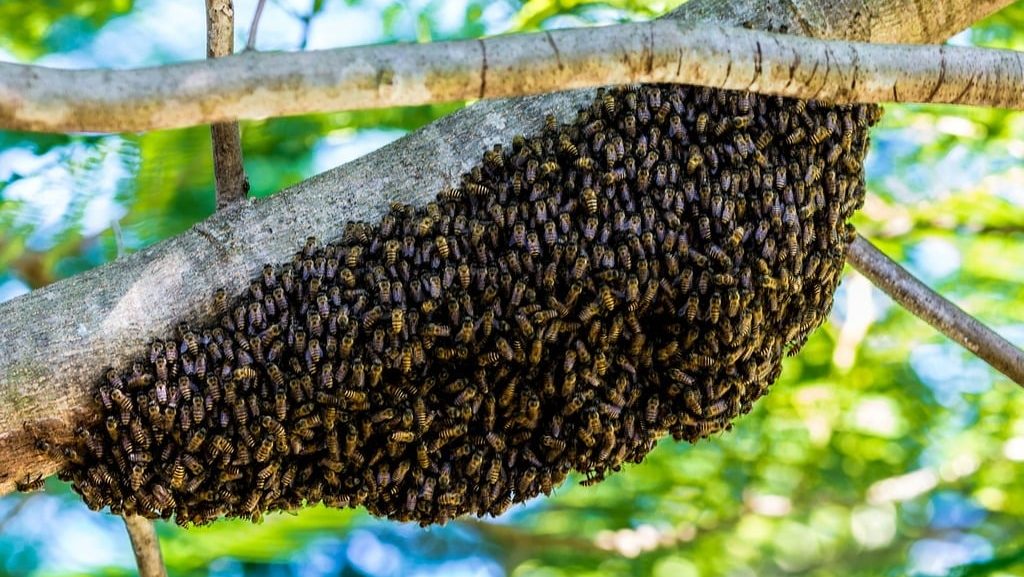 Carpenter bees are solitary pollinators that play an essential role in the ecosystem. However, their nesting behavior can cause significant damage to wooden structures. Spotting the signs of a carpenter bee nest early is crucial to protecting your property from long-term harm.
In this blog, we’ll provide information about the signs of carpenter bee nests, steps to find a nest, its structure, and tips for effective prevention and removal.
Carpenter bees are solitary pollinators that play an essential role in the ecosystem. However, their nesting behavior can cause significant damage to wooden structures. Spotting the signs of a carpenter bee nest early is crucial to protecting your property from long-term harm.
In this blog, we’ll provide information about the signs of carpenter bee nests, steps to find a nest, its structure, and tips for effective prevention and removal.
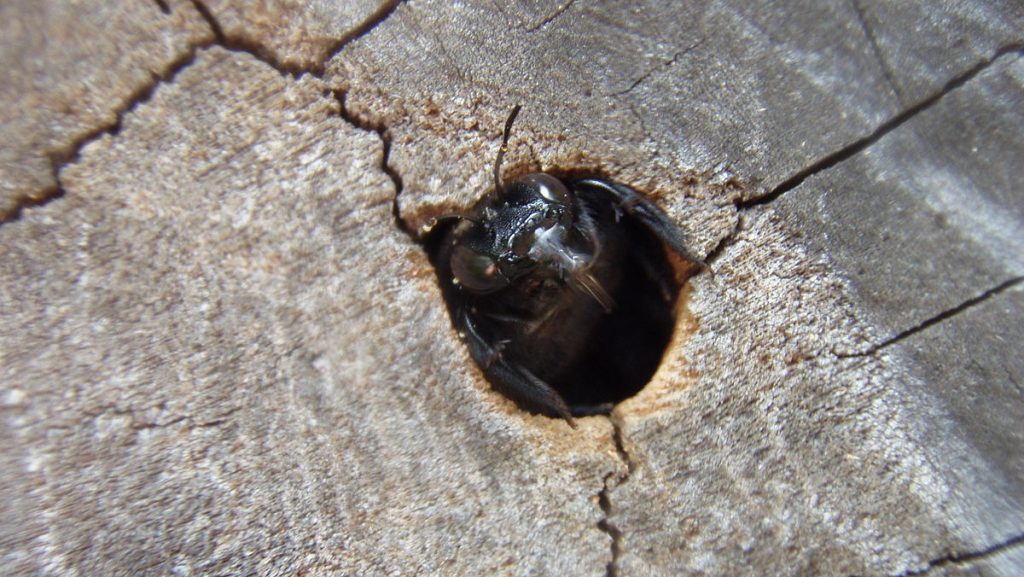

Not getting a solution?
Get your free pest control estimate today!How to Find Carpenter Bee Nests
If you want to find a carpenter bee nest, pay close attention to its location, entry points, and surrounding activity. Common signs of a nearby nest include increased bee activity, where large bees hover around wooden surfaces, particularly in sunny areas during spring and summer.Another sign of a carpenter bee nest includes perfectly round, smooth holes in wood, often found on the undersides of eaves, beams, or decks. Fresh sawdust or wood shavings near wooden structures further indicate carpenter bee activity.
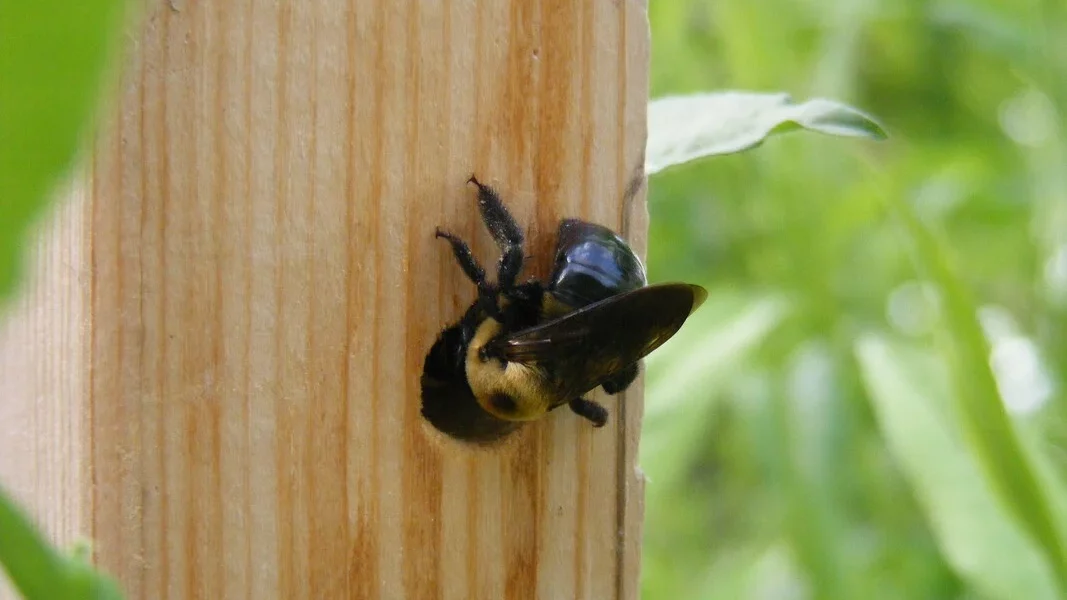 Additionally, oily, dark stains around nest entrances are left by the bees’ bodies. You may also hear soft buzzing sounds coming from active nests when tapping on wooden surfaces. It is crucial to maintain a safe distance while inspecting these potential nests, as female carpenter bees can sting if they feel threatened. If the nest is located near your house and you are seeing a lot of bee activity, we recommend getting pest control help to remove them.
Additionally, oily, dark stains around nest entrances are left by the bees’ bodies. You may also hear soft buzzing sounds coming from active nests when tapping on wooden surfaces. It is crucial to maintain a safe distance while inspecting these potential nests, as female carpenter bees can sting if they feel threatened. If the nest is located near your house and you are seeing a lot of bee activity, we recommend getting pest control help to remove them.
What Does a Carpenter Bee Nest Look Like?
The appearance of carpenter bee nests is distinct from other insect nests. Unlike hive-building bees, carpenter bees bore into wood to create their nests.Common Features of a Carpenter Bee Nest
-
Hole Shape: Carpenter bee nests are characterized by smooth, round holes approximately 1/2 inch in diameter. These holes are cleanly drilled into the wood’s surface.
-
Sawdust and Wood Shavings: Look for piles of fresh sawdust or wood shavings near the entrance hole, a byproduct of the bees’ burrowing activity.
-
Tunnels: Inside the wood, these nests consist of tunnels that run perpendicular to the surface and can extend several inches. These tunnels provide space for the bees to lay their eggs.
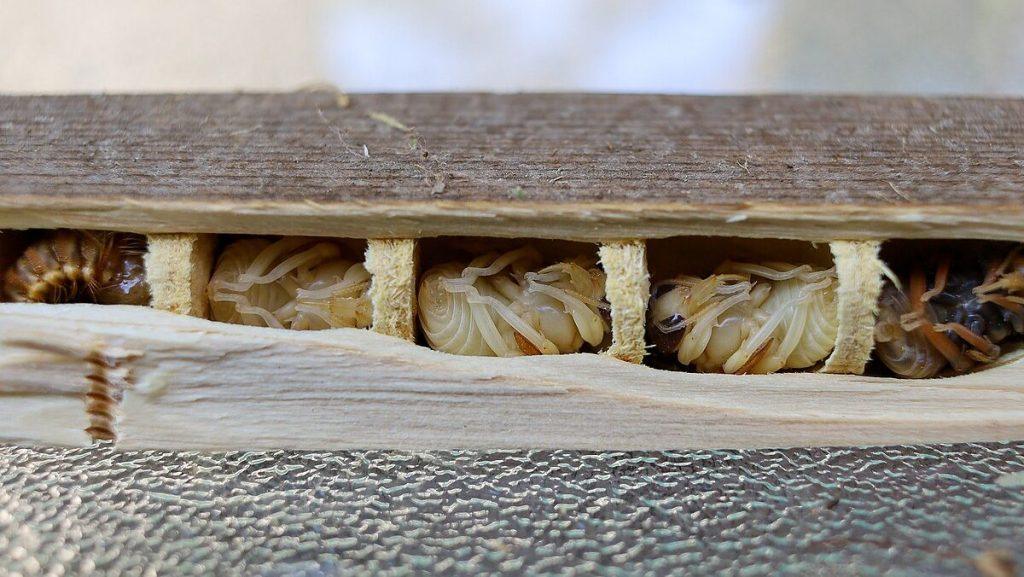
What Are Carpenter Bee Nests Made Of?
Carpenter bee nests are not made of external materials like paper or mud. Instead, these bees tunnel directly into wood to form their nests. The wood they remove is pushed out, resulting in visible piles of sawdust near the nest entrance. Unlike social insects, carpenter bees do not share a communal nest. Each female bee creates her own nesting site, often reusing the same location annually or expanding the existing tunnels.Where to Look for Carpenter Bee Nests?
Carpenter bees are known to target specific areas for nesting, particularly where untreated or weathered wood is exposed. Their preference for secluded, sheltered locations allows them to avoid predators and harsh weather conditions. Below are some common spots where you can find a carpenter bee nest:Common Carpenter Bee Nesting Sites
-
Eaves, Decks, and Railings: Carpenter bees frequently nest in outdoor wooden structures like decks and railings, especially if the wood is not treated with paint or sealant.
-
Wooden Furniture or Fences: Patio furniture and wooden fences are prime targets due to their accessibility and untreated surfaces.
-
Siding, Window Frames, and Roofing Overhangs: These areas provide protection from the elements, making them an attractive nesting option.
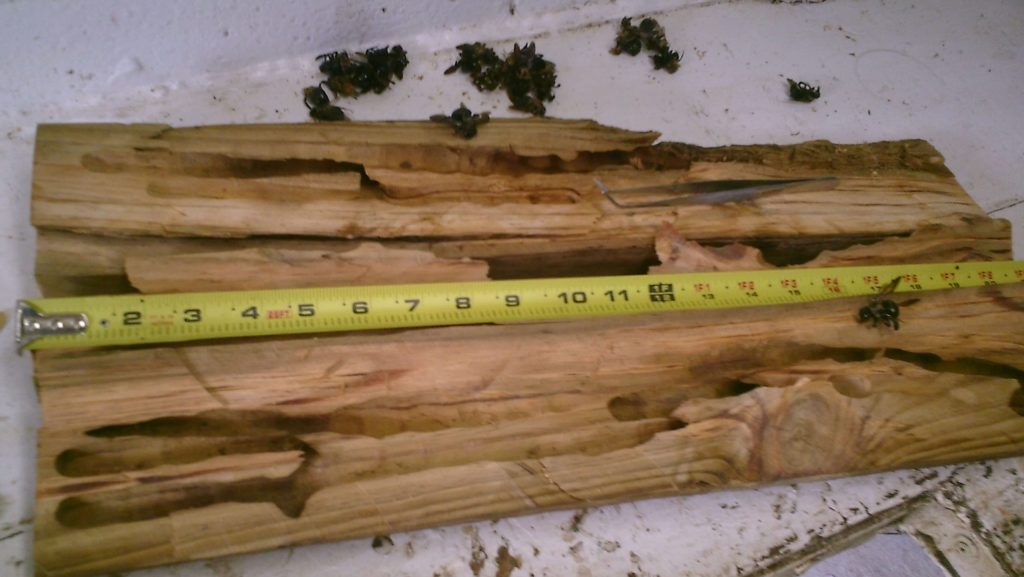
How to Remove Carpenter Bee Nests?
Removing a carpenter bee nest requires care and the right approach to ensure effective results while minimizing harm to the bees.How to Safely Deal with Carpenter Bee Nests
Follow this step-by-step guide to safely remove carpenter bee nests and prevent future infestations.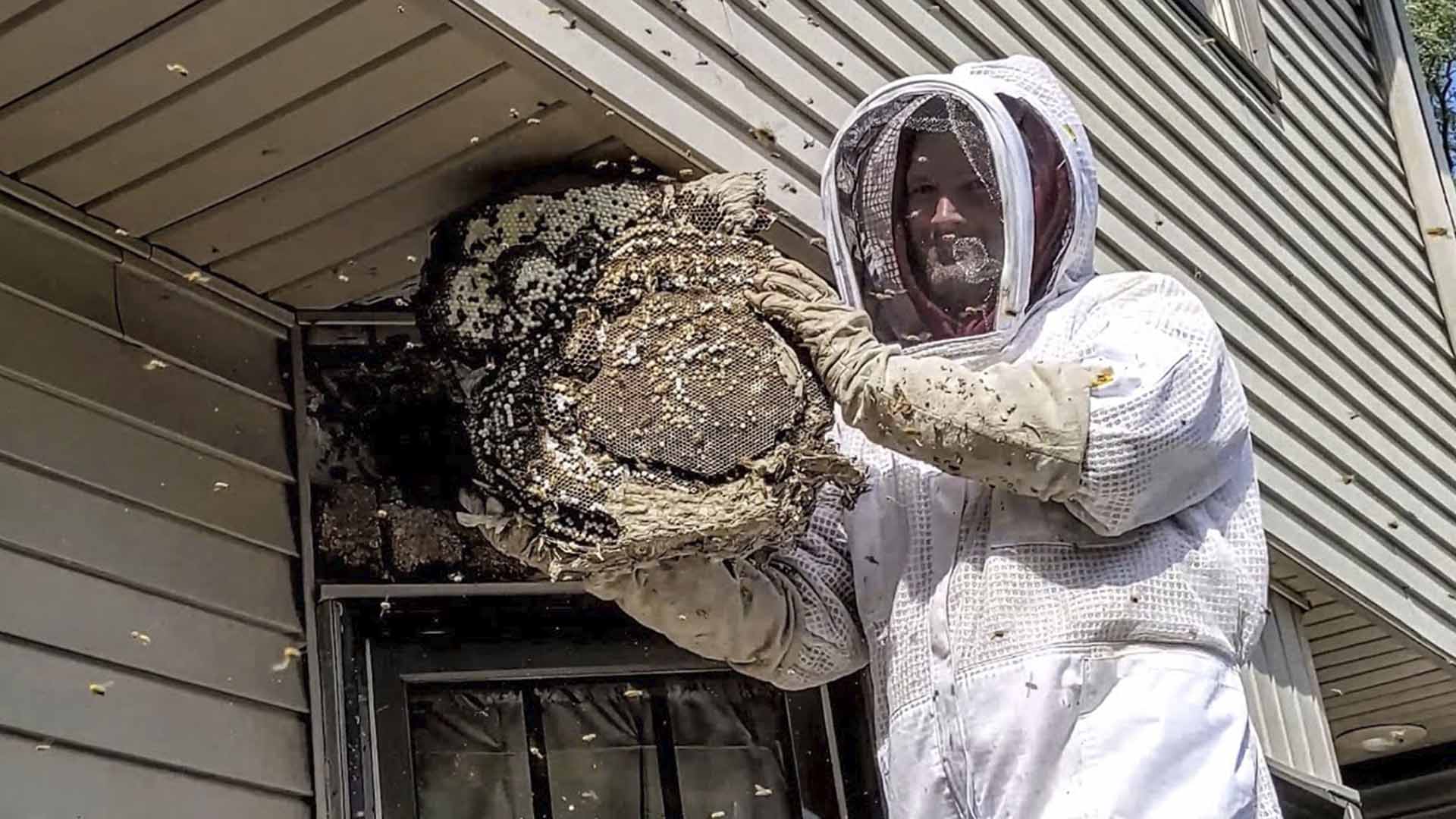
Step-by-Step Instructions
1. Assess the Situation
- Evaluate the nest’s location and activity level. Small nests with minimal activity can often be managed on your own, but larger infestations may require professional pest control services.
2. Choose the Right Time
- The best time to address a carpenter bee nest is late evening or early morning when bees are less active and more likely to be inside the tunnels.
3. Wear Protective Gear
- Wear gloves, long sleeves, pants, and eye protection to avoid potential stings. Female carpenter bees can sting if disturbed.
4. Treat the Nest
- Use an insecticide dust or spray labeled for carpenter bees. Apply the treatment directly into the holes and tunnels.
For a natural solution, use essential oils like citrus or peppermint, which are effective repellents.
5. Seal the Holes
- Once you’re confident that the bees have been eradicated, seal the holes with wood filler or caulk. This prevents new bees from using the same site for nesting. Sand and repaint the surface for added protection.
Note
Always observe safety precautions and consider professional help for large infestations.Dos and Don’ts for Carpenter Bee Control
Preventing carpenter bee infestations requires a strategic approach. While certain actions can effectively deter these wood-boring insects, others may unintentionally make the problem worse. Here’s a quick guide on what you should and shouldn’t do to keep carpenter bees away.Do’s & Don’ts for Managing Carpenter Bees
DO'S
-
Seal cracks, crevices, and holes in wooden surfaces to block entry points.
-
Apply fresh paint or stain to the wood to make it less appealing to carpenter bees.
-
Install carpenter bee traps in areas with frequent bee activity.
DON'TS
-
Leave untreated or weathered wood exposed, as it attracts carpenter bees.
-
Ignore early signs of activity, such as small holes or piles of sawdust.
-
Use harsh chemicals without proper precautions to avoid harming pets and humans.
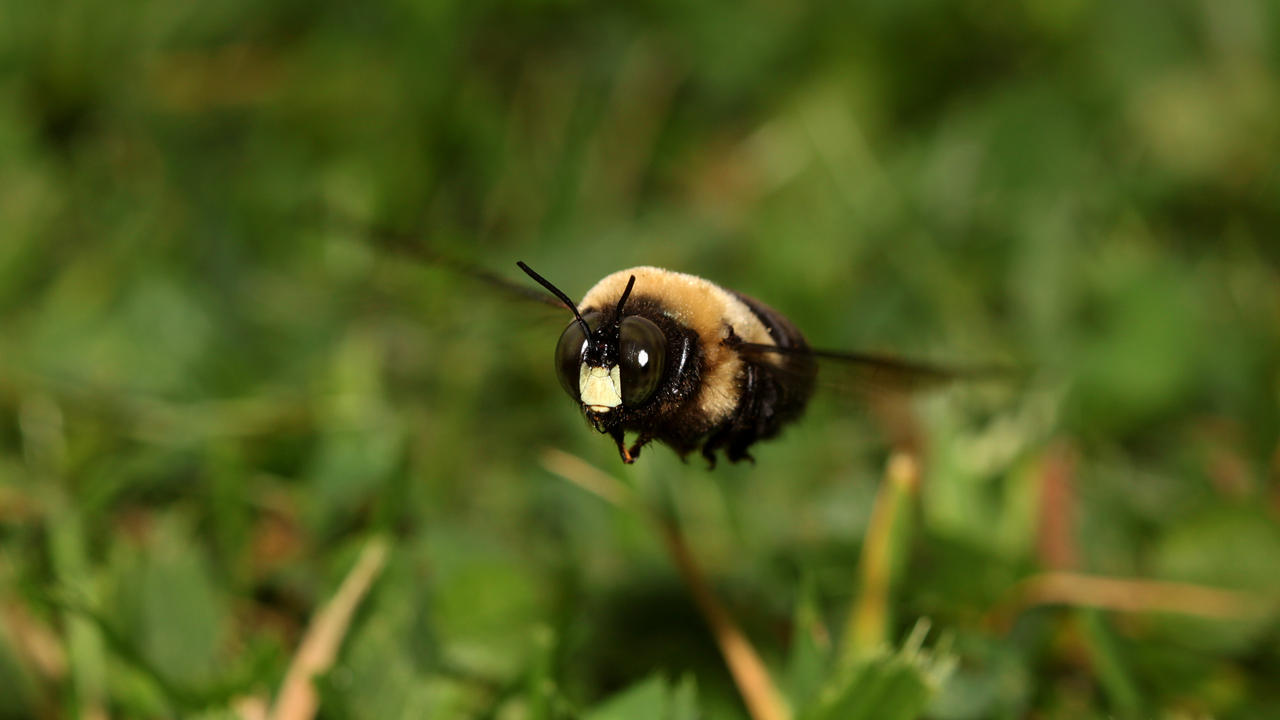
How to Prevent Carpenter Bee Nests?
Preventing carpenter bee infestations is crucial to protecting your wooden structures from damage. Some simple changes to your environment can discourage these bees from nesting in your home or yard. Here are effective prevention strategies to keep carpenter bees at bay:Tips to Prevent Carpenter Bee Infestations
-
Repaint or stain wood to create a protective barrier.
-
Seal cracks and gaps in wooden structures to block entry points.
-
Install bee traps around decks, eaves, and wooden areas.
-
Use natural repellents like citrus or peppermint oil.
-
Replace old, weathered wood with treated lumber or alternative materials.
Myths and Facts About Carpenter Bee Nests
Carpenter bees are often misunderstood due to several common myths surrounding their behavior and impact. Here are some of the most common myths about carpenter bees and the facts that debunk them:| Myth | Fact |
|---|---|
| Carpenter bees eat wood. | Carpenter bees do not eat wood. They drill into it to create nests but rely on nectar and pollen for food. |
| Carpenter bees live in colonies like honeybees. | Carpenter bees are solitary insects. While you may see several bees around a nesting area, each female builds and occupies her own nest. |
| Painting wood prevents carpenter bee infestations. | While painting or staining wood can deter carpenter bees, it doesn’t guarantee protection, especially if the wood is untreated or weathered. |
| Carpenter bees abandon their nests after one season. | Carpenter bees often reuse the same nests year after year, expanding the tunnels over time. |
| Male carpenter bees can sting. | Male carpenter bees cannot sting. They may act aggressively but are harmless. Only females can sting, and they usually do so only when provoked. |





